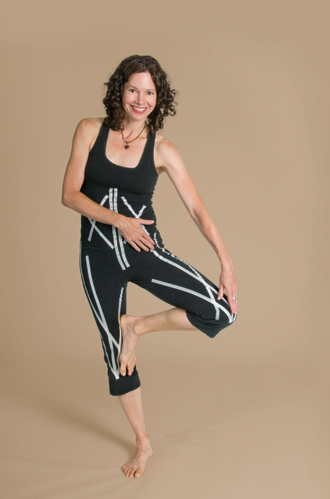Sticky Business

The catchy lyrics to "Dry Bones" make it easy for children to get a feel for the body's skeletal system. With the leg bone connected to the knee bone, and the knee bone connected to the thigh bone, and the thigh bone connected to the . . . well, you get the idea.
No one has come up with such a snappy tune for learning the muscles in the body. And even the minds of college students become tangled when contemplating the sartorius that runs from the anterior superior iliac spine to the medial condyle of the tibia.
The solution? Tape. At least that's one method used by dance professor Julie Brodie in her course "Dance Kinesiology." The course is required for students who major in dance, but typically at least half of the class consists of athletes, biology majors, and pre-meds.
Brodie has students tape different muscles to help visualize the path of the tissue. As students perform simple dance movements, the muscles will contract and the tape slackens. As muscles lengthen, the tape stretches. "Muscles are just more difficult to visualize than bones. I can see the students begin to zone out with all the technical terms," says Brodie. "Using the tape simplifies matters. It's not just words anymore, and it's much less intimidating."
Brodie, who learned about muscles with pre-med students in a cadaver lab at the University of Illinois, thinks everyone can benefit from an awareness of how we use our muscles. "People tend to focus on pain and spot-fixing," says Brodie. "If your neck hurts, you take a couple of aspirin and book a massage. What you should really be considering in the long term is what you may be doing to cause the pain."
Tape is Brodie's way of helping her students learn while keeping it fun. "I like to integrate hands-on activities in all of my lecture courses," she says. "The students get a kick out of the tape."

 Delicious
Delicious Facebook
Facebook StumbleUpon
StumbleUpon Digg
Digg reddit
reddit